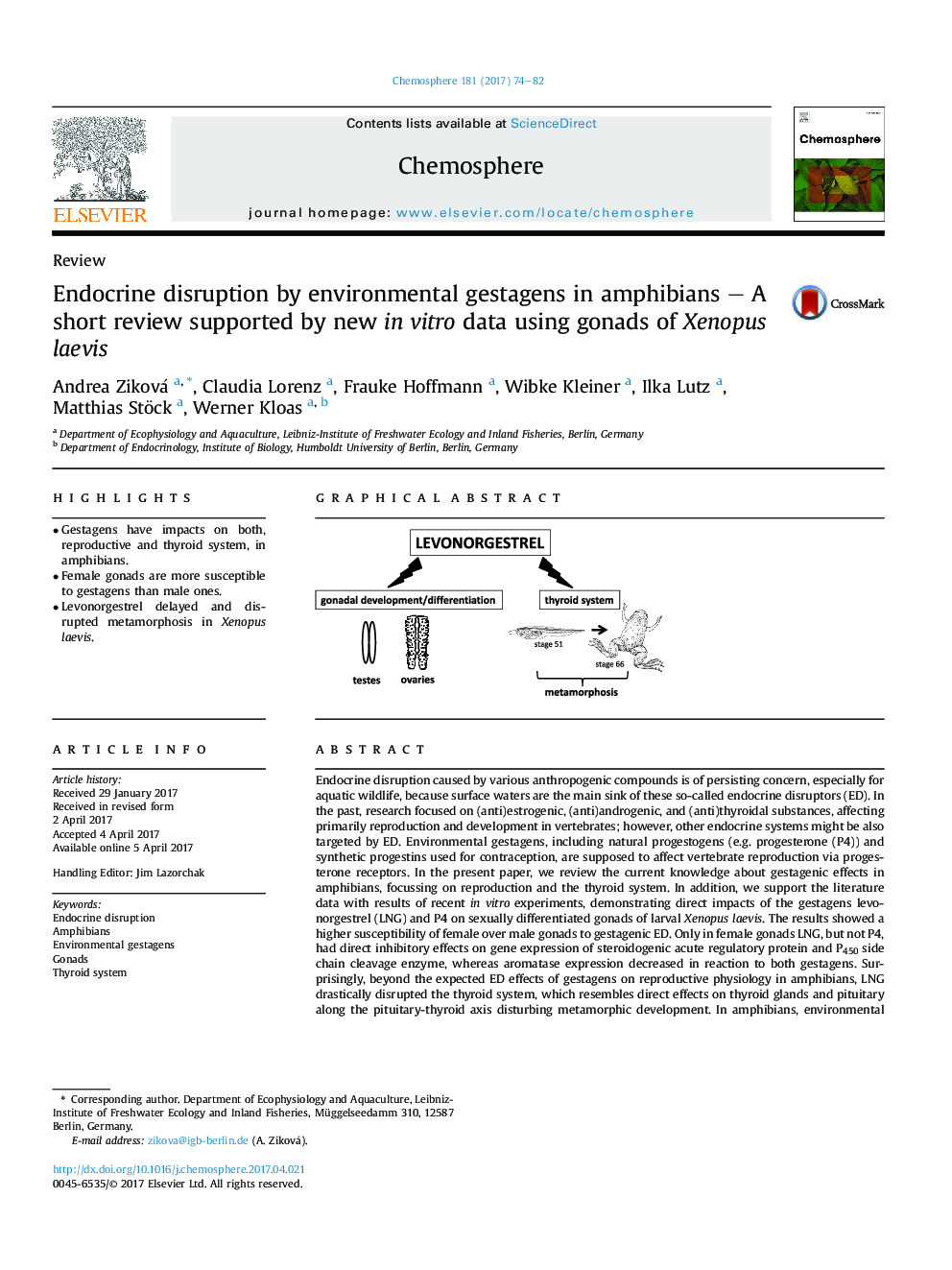| Article ID | Journal | Published Year | Pages | File Type |
|---|---|---|---|---|
| 5747161 | Chemosphere | 2017 | 9 Pages |
â¢Gestagens have impacts on both, reproductive and thyroid system, in amphibians.â¢Female gonads are more susceptible to gestagens than male ones.â¢Levonorgestrel delayed and disrupted metamorphosis in Xenopus laevis.
Endocrine disruption caused by various anthropogenic compounds is of persisting concern, especially for aquatic wildlife, because surface waters are the main sink of these so-called endocrine disruptors (ED). In the past, research focused on (anti)estrogenic, (anti)androgenic, and (anti)thyroidal substances, affecting primarily reproduction and development in vertebrates; however, other endocrine systems might be also targeted by ED. Environmental gestagens, including natural progestogens (e.g. progesterone (P4)) and synthetic progestins used for contraception, are supposed to affect vertebrate reproduction via progesterone receptors. In the present paper, we review the current knowledge about gestagenic effects in amphibians, focussing on reproduction and the thyroid system. In addition, we support the literature data with results of recent in vitro experiments, demonstrating direct impacts of the gestagens levonorgestrel (LNG) and P4 on sexually differentiated gonads of larval Xenopus laevis. The results showed a higher susceptibility of female over male gonads to gestagenic ED. Only in female gonads LNG, but not P4, had direct inhibitory effects on gene expression of steroidogenic acute regulatory protein and P450 side chain cleavage enzyme, whereas aromatase expression decreased in reaction to both gestagens. Surprisingly, beyond the expected ED effects of gestagens on reproductive physiology in amphibians, LNG drastically disrupted the thyroid system, which resembles direct effects on thyroid glands and pituitary along the pituitary-thyroid axis disturbing metamorphic development. In amphibians, environmental gestagens not only affect the reproductive system but at least LNG can impact also development by disruption of the thyroid system.
Graphical abstractDownload high-res image (173KB)Download full-size image
